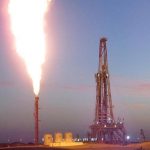Dubai — The UAE’s juggling of energy transition and plans to eke out more profit from oil and gas projects has left it trying to secure a role in future crude demand scenarios while appeasing investors looking to combat climate change.
As OPEC’s third largest producer, the UAE has commitments as a member of the alliance but it is also pursuing its own agenda to speed up production of oil reserves before peak demand becomes a reality.
Abu Dhabi National Oil Co, the UAE’s biggest energy producer, is accelerating exploration and oil development projects to boost its crude production capacity to 5 million b/d by 2030 from over 4 million b/d now.
Oil-rich Abu Dhabi wants to achieve that target while addressing its greenhouse emissions and carbon intensity of its oil and gas operations.
ADNOC says its oil and gas production is low cost and low carbon as it plans to reduce its GHG intensity by 25% by 2030.
Green investment
“On an absolute scale, emissions will grow along with production, but ADNOC is focusing on the GHG intensity of each barrel it produces,” said Ben Cahill, senior fellow, Energy Security and Climate Change Program, at the Center for Strategic and International Studies.
“ADNOC and other Gulf NOCs can make the case that their crude has a smaller carbon footprint. They have large, well-managed reservoirs, lower methane emissions, and lower water cuts compared with most crude production –– allowing less energy-intensive extraction.”
To develop its hydrocarbon resources, ADNOC is teaming up with international oil companies such as Eni, Total and other major global players who have pledged to lower their carbon emissions.
ADNOC is also attracting investors such as BlackRock, the world’s biggest asset manager, and KKR & Co, who bought a stake in select oil pipeline infrastructure from the national oil producer.
However, the financial firms are also under pressure from investors to pursue greener investments. As ADNOC continues to monetize its assets, it is likely to be selective in whom it courts.
“Lenders and institutional investors increasingly need to follow ESG demands, so IOCs and NOCs alike will have to adapt in order to access international capitals,” said Cahill. “And ADNOC is a resource-holding NOC. These demands on oil companies will affect how they select partners and investments.”
Carbon footprint
ADNOC’s future projects will leave a mark on the country’s emissions.
Overall, the UAE’s per capita carbon foot-print is nearly five times the global average, with 20 mt of CO2 per capita compared to the world’s 4.4 mt in 2018, according to International Energy Agency data.
The main source of CO2 emissions is gas, according to the IEA. Gas is the main feedstock for power generation in the UAE.
Climate Action Tracker expects the UAE’s GHG emissions in 2020 will be 6%–9% lower than 2019 due to “an unprecedented slowdown of domestic economic activity, international trade, and oil demand”, it said in November.
However, CAT is projecting that emissions will grow by 50% by 2030 from now under current policies.
As for methane emissions from the oil and gas sector, the UAE is estimated to be responsible for 1.3% of the global total of methane emissions from oil and gas in 2020, according to the IEA.
However, the UAE is trying to change course.
It is investing in renewable energy, attracting some of the world’s cheapest solar prices, developing nuclear power to diversify its energy mix and more recently pledging to become a major source of green and blue hydrogen.
Hydrogen leader
ADNOC, sovereign wealth fund Mubadala Investment Co. and investor ADQ have formed an alliance to make Abu Dhabi a leader in producing green and blue hydrogen and they will also work to build a green hydrogen economy in the UAE.
The three companies will create a roadmap for adoption of hydrogen in the country’s utilities, mobility and industry with international partners.
ADNOC also plans to develop its carbon, capture, utilization and storage capabilities and has signed agreements with Eni and Total on CCUS.
ADNOC in on track to boost its capacity to capture CO2 to 5 million mt/year of CO2 by 2030, from 800,000 mt/yr now.
“At this stage, CCUS has not yet proven to be a full commercially viable technology. Placing high bets on that can be risky,” said Mia Moisio, climate policy analyst at NewClimate Institute, which co-runs the Climate Action Tracker with Climate Analytics.
The UAE wants to generate half of its power from clean energy sources, including nuclear, by 2050. However, the 2050 mix includes 12% from “clean coal”.
“In terms of renewable energy development among Gulf countries, the UAE is clearly a regional leader,” said Miosio.
“But it is the first country in the Gulf region to build a coal power plant, which is clearly an alarming signal to the UAE and also for the region.”





